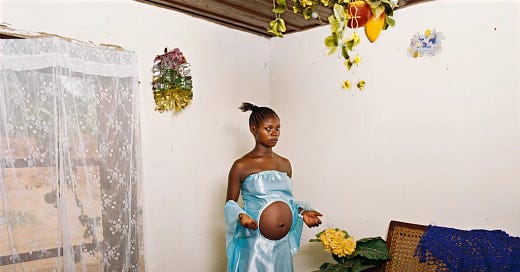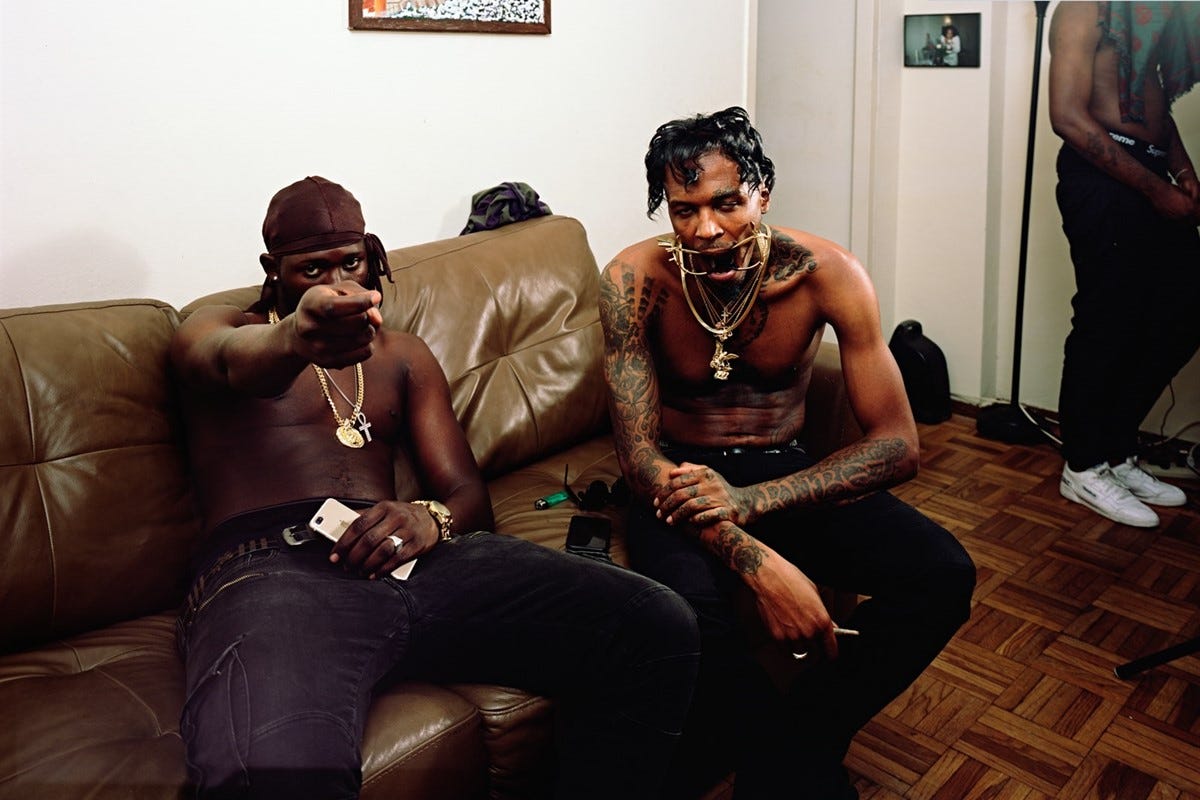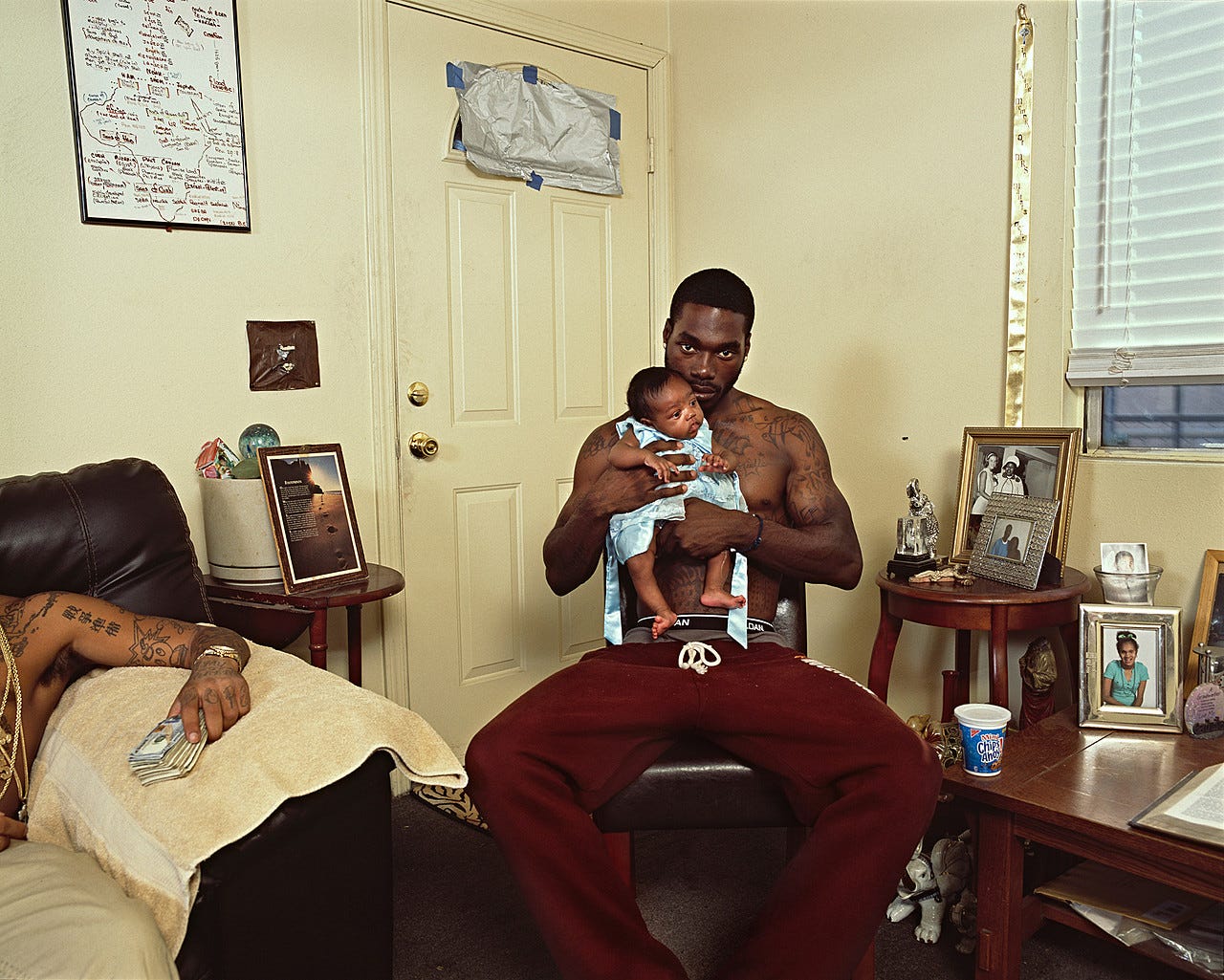Deana Lawson, a 43-year-old photographer, educator, and artist, is sitting on the subway in NYC looking out the window; she sees a woman walk onto the train and suddenly feels connected to her because of the feeling she gets when looking at the woman. Lawson follows the woman off the train a few stops later, stops her, introduces herself, and asks for the woman's number. The next day, Lawson is at the woman's house, posing and staging her for a photo.
Lawson has a rare talent. She can make her controlled images look natural.
Deana Lawson is a Black American photographer, artist, and educator whose photography explores lower-class Black culture in New York City and abroad. She was born in Rochester, New York, and holds a BFA in photography from Pennsylvania State University after dropping her major in business and an MFA from the Rhode Island School of Design.
Her work is in The Art Institute of Chicago, Solomon R. Guggenheim Museum, the Whitney Museum of Art, and more. In 2018, Lawson became the first photographer to win Guggenheim Museum's Hugo Boss Prize, which awarded her $100,000. Her authentic images earned her these accomplishments.
On social media, people try to do what Lawson does. They try to control their photography to make it look naturally perfect, but they fail. When looking at images on Instagram, especially images posted by influencers, you can usually tell when a person manipulates their skin tone or body type.
People on social media could learn how to create authentic images from Lawson. In a 2015 talk at the Art Institute of Chicago, Lawson stood in front of an audience wearing red lipstick, a button-up collared white shirt, and had her hair braided in a pineapple shape. She says she did not want to use a particular person to model for a picture at first because she saw the person as being "too attractive." Lawson's ability to know when a person is too attractive for an image demonstrates her ability to control an image while still making the photo look authentic.
Zadie Smith, a British writer, best explains how Lawson successfully portrays Black bodies through her work. "Outside a Lawson portrait, you might be working three jobs, just keeping your head above water, struggling. But inside her frame, you are beautiful, unbroken, unfallen," says Zadie Smith in the Aperture book: Deana Lawson: An Aperture Monograph Hardcover.
Similarly, influencers try to convince their audience that they are beautiful, unbroken, and unfallen but fail when they start to sell products through their images. Unlike influencers, Lawson is not trying to sell you on a product but a person, and she does every time.
During Lawson's Art Institute of Chicago talk, she describes what one may assume to be a spiritual experience. She says she saw a priest become possessed by a spirit while in Haiti. The priest picked up a pig's head and then marched around with it. Lawson said she had to go back to Haiti to capture that image. The next thing you know, there is a photo of a woman with a pig on her head.
Lawson makes people see things they wouldn't otherwise see in a natural and meaningful way, and the image of a woman with a pig on her head is a perfect example.
Her photo "Sons of Cush" (2021) is of a newborn baby in the arms of its father, who is shirtless, and surrounded by photos in frames. The photo takes the audience to their grandmother's house, where there is a photo of every grandchild and their accomplishments framed. In the corner of the photo is a whiteboard that looks like a business plan drawn in the shape of Africa.
Although I can not tell you if the shape of Africa was an accident or stage, I can say if Lawson had not staged the photo in that particular place, it would not have been as strong. Lawson's Sons of Cush illustrates her ability to control her images while showing the inner lives and culture of Black people, whom society often ignores.
Lawson might be the only photographer of our time who could stage a photo while conveying the realities of Black people.
Discussion about this post
No posts







Love this. Lawson’s work reminds me of the Brooklyn I grew up in. Thank you for profiling her. Someone needed to show me write ups like these when I was young so I could recognize that my whole community was already a museum. I didn’t need these pictures in the Whitney or the Louvre to validate that they were worthy.
I first read about Deana Lawson’s work in the book by Tina M. Campt called A Black Gaze.
Your review is written with equal tenderness that her photos demonstrate!